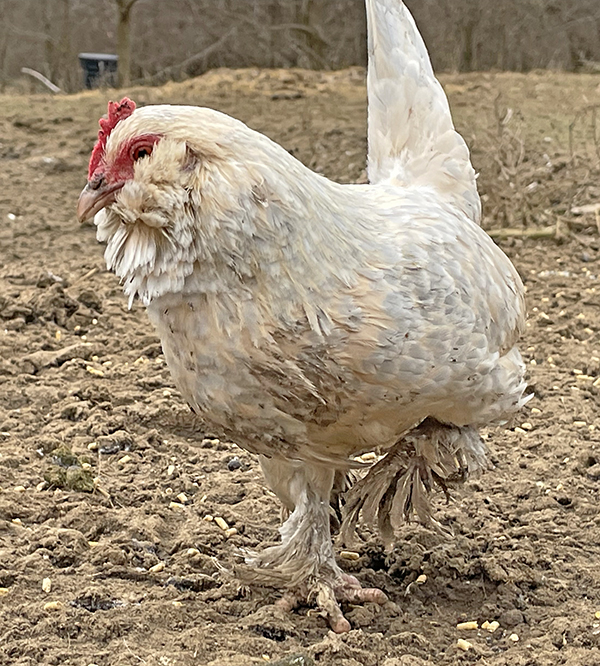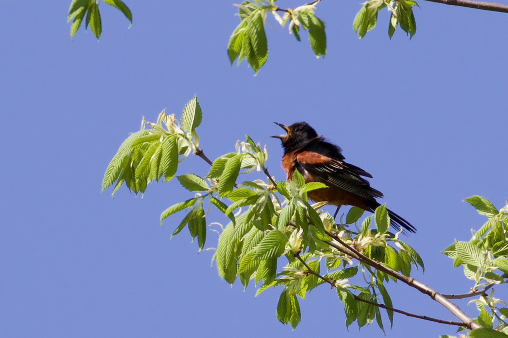Lavender was one of several victims of a chain farm store’s new retail chick display system. Rather than an open-air enclosure system, this new system took up less retail floor space by stacking the live products in an enclosed space. The stack was a high-rise; a chick skyscraper with no open windows to vent the ammonia produced by heated chick feces. We saw one little chick beating its beak on the upper layer’s window. All the other chicks on that level were dead. The chicks on lower levels were dead or slowly dying. We were given permission to help clear the dead and purchase the living for $1. The farm store reverted to the one air system at all of their locations, at least in Northwest Ohio.

Three of the chicks that came to the farm animal sanctuary survived. Sidney, a Silkie Rooster, and Speckles, a calico Bantam hen, are tight buddies. Lavender, so-named for her muted violet-and-pearl plumage, keeps her own counsel. She is what is referred to as a “fancy”, with swirls of feathers booting her little feet. She flits in and out of the standard flock of hens and roosters, dodging under their feet for breakfast. This system works well for her in summer and fall. In wet spring and soupy winter mud and slush, her feathered boots cake and weight her down. Breeders are not known for their practicality.
Last year, her fancy footwear became so clogged that we had to soak them in warm water, trim her foot feathers and keep her indoors to allow her to eat and sleep in dry warmth. Once she recovered, we reintroduced her to the flock and she wanted nothing to do with humans beyond feeding time. Last week, Steve saw her hiding from one of the younger roosters. Lavender hopped up to Steve and chattered. She allowed herself to be picked up. Steve saw that her foot feathers were boggy. He took her inside, soaked her feet, trimmed and dried her feathers and set her outside. She hopped away to rejoin the flock and is not currently seeking human interaction other than at mealtime.
Click on the cover above to download your copy of The Quarry Farm Winter 2024 newsletter.


























